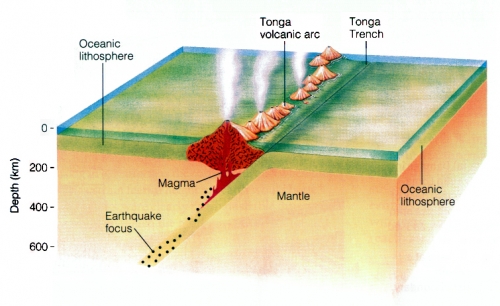Image Source: http://en.wikipedia.org/wiki/Jack_Oliver_(scientist). Retrieved 24, January 2011.
Biographical Information
John "Jack" Ertle Oliver was born in Massillon, Ohio on September 26, 1923. He received his bachelor's degree from Columbia University in 1947, where he was initially recruited and received a football scholarship. During his undergraduate work at Columbia Jack's studies were put on hold during his service in the United States navy during WWII. While in the navy Jack served in the United States Naval Construction Battalion, also known as the Seabees, in Hawaii and the south Pacific. Upon returning to his studies Jack also received his master's degree in physics and eventually his PhD. in geophysics in 1953 from Columbia's Lamont-Doherty Earth Observatory. Oliver went on to head the Lamont seismology program at Columbia University for three years before moving his research to Cornell University in 1971. Jack Oliver passed away recently on January 5, 2011 in Ithaca, NY.
Specific contributions to the theory of plate tectonics and/or our modern view of the solid Earth
While working as a geophysicist at Columbia University, Oliver, along with his student and associate Bryan Isacks published a paper in 1967. The paper, which was based on research conducted by the team in Fiji and Tonga, described, for the first time, the geophysics of convergent plate boundaries, and more specifically subduction zones. The research was based on the evidence of deep focus earthquakes along these subduction zones in the south Pacific. According the Oliver, this area was choosen because of the frequency of deep earthquakes in the Fiji-Tonga area. For the first time earthquake depths of 500+ kilometers were recorded and mapped. The team claimed that these earthquake depths and patterns could only be explained by the motion of one lithospheric plate being pulled under another. In 1968 Oliver and Isacks teamed up with Lynn Sykes and published a paper entitled "Seismology and the new global tectonics". This paper, which was more encompassing, turned out to be more popular than their 1967 paper, incorporated the work done by Sykes on the topic of sea-floor spreading. The group containing Oliver, Isacks and Sykes are credited with the first evidence of the behavior of lithospheric plates and their interaction with the upper mantle. This paper along with later research paved the way for our current model and geophysical understanding of subducting lithospheric plates and convergent plate boundaries.

Image Source: http://www.yorku.ca/esse/veo/earth/sub1-10.htm. Retrieved 3, Feb. 2011.
Later in his career, while working at Cornell University, most of Oliver's research in reflective seismology was used for oil exploration. This work in reflective seismology led Oliver to eventually help establish the Consortium for Continental Reflection Profiling (Cocorp).
Other important scientific contributions
In the late 1950's Oliver was a White House adviser during the writing of the nuclear test-ban treaties. During his seismic research, Oliver noticed that the nuclear test taking place in Nevada, produced seismic waves that were recorded on his equipment. According to Oliver, "...overnight I became the world's expert on the subject." and "'Even the professionals who were in the business of detecting explosions' were surprised to learn that a nuclear explosion in Nevada could be detected at a seismic station in New York State." (NY Times 2011)

Image Source: F. Ringdal, in Seismic Verification of Nuclear Treaties, Offices of Technologies Assessment, May 1998. pg. 83. Retrieved 7, Feb. 2011
Other cool stuff you should know
Did you know that Dr. Jack Oliver not only wrote and had scientific works published, he was also right at home writing limericks. Here are some examples of his lesser known, slightly less scientific works.
From Shocks and Rocks (1996)
The plates in dynamic mosaic
Through history both fresh and archaic
Like bold engineers
For some two billion years
Have kept Earth from becoming prosaic.
From his autobiography, "Shakespeare Got It Wrong; It's Not 'to be,' It's to Do;" (1998)
The youth wondered what he should be
His prof said, "You're missing the key.
Life's not to be, but to do
Pick a task, follow through.
You'll live ever after most happily."
Bibliography
http://en.wikipedia.org/wiki/Jack_Oliver_(scientist). Retrieved 24, January 2011.
http://www.garfield.library.upenn.edu/classics1979/A1979hz30900001.pdf. Retrieved 7, Feb. 2011
http://www.nytimes.com/2011/01/12/science/earth/12oliver.html). New York Times. January 12, 2011. Retrieved 24, January 2011.
http://www.yorku.ca/esse/veo/earth/sub1-10.htm. Retieved 3, Feb. 2011
Isacks, B., J. Oliver, and L. R. Sykes (1968), Seismology and the New Global Tectonics, J. Geophys. Res., 73(18), 5855-5899, doi:10.1029/JB073i018p05855.
